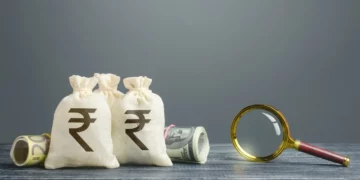Last Updated on November 28, 2025
Introduction
To ensure profits, the selling price must always be more than what it costs to manufacture or make a product.
The cost units of a product may be classified into multiple categories. One of them is direct expense. It’s the cost of producing a product or delivering a service. They show how much a company spends to create what it sells.
This type of expense plays a crucial role in keeping the pricing competitive. Discover how businesses record these expenses and what they cover.
Read More: Expense Categories- What They Are and How Can They Help
What is a direct expense?
A direct expense is the total production cost of a specific product or service. It’s connected to a particular item you’re making or a service you’re offering.
It helps you set the price right and manage budgets efficiently. These expenses can be grouped into various categories, each reflecting different aspects of production or service processes.
Monitoring your direct expenses helps you make better financial decisions in a business.
What are the types of direct expenses?
You incur several cost objects while producing products or providing services, including:

- Raw materials include all basic materials needed to create a product. For example, wood, nails, and paint are raw materials used to make furniture.
- Direct labor is the cost of paying workers directly involved in making a product or delivering a service. If you run a car repair shop, the wages you pay to mechanics who fix cars are direct labor costs.
- Manufacturing supplies are the smaller, often consumable items (direct materials) used in production. For example, ink and paper are manufacturing supplies in a printing business.
- Freight and shipping charges are the cost of transporting raw materials to your business.
Must Read: Happay’s Expense Management Software
Accounting for direct expenses
Accounting for direct expenses requires you to record expenses in your books. Financial statements reflect the same expenses.
1. Methods of recording direct expenses
Recording direct expenses is crucial for businesses to keep track of their costs.
There are several methods you can use.
- Receipts and invoices: Every time businesses buy materials or pay for production-related services, they should keep the receipts and invoices. This documentation shows how much was spent and what it was spent on.
- Expense journals or ledgers: Businesses often use journals or ledgers to record all their expenses. Direct expenses can have their section or a separate ledger. Details of each expense, the date, the amount, and a brief description offers a complete picture of the expense.
- Spreadsheets or accounting software: Many businesses use spreadsheets like Excel or accounting software to record expenses. These tools make entering, tracking, and analyzing expenses over time easy. They can automatically add up totals and sort expenses into categories.
- Purchase orders: Using a purchase order system helps track expenses when ordering materials or services. The purchase order shows order details making it easier to record when the invoice arrives.
- Time tracking for direct labor: For direct labor costs, businesses often use time-tracking software. Employees log their work hours on specific tasks or projects, which is used to calculate the direct labor expense.
Learn About: Purchase Order and Invoices: Definition and Differences
2. Impact on financial statements
Direct expenses significantly impact financial statements showing a business’ financial performance and position.
Here’s how they affect them:
- Income statement: Direct expenses are deducted from revenue to calculate the gross profit. It shows how efficient the company is at turning raw materials and labor into profitable products.
- Balance sheet: Direct expenses like the cost of raw materials can affect the inventory value, which is an asset. As these materials are used up in production, the inventory value decreases, and the balance sheet reflects it.
- Cash flow statement: Direct expenses, especially those paid in cash, show up here. For instance, when a business pays for raw materials in cash, this payment is recorded as a cash outflow in the operating expenses section of the cash flow statement.
Read More: Cash Flow: What is it, Types, How does it works, Formula & Example
Managing direct expenses
You can follow a few best practices to manage direct expenses and reduce them to increase profitability.
1. Tips for effective management of direct expenses
Managing direct expenses is about more than just cutting costs. It’s about spending wisely and making sure that every dollar you spend contributes to business success.
- Spot unexpected increases: Keep an eye on your direct expenses often. This way, you can spot any unexpected increases or areas where you might be spending too much.
- Talk to your suppliers: Get better prices or discounts, especially if you buy in large quantities. Building good relationships with suppliers can also lead to better deals. Buy materials in bulk. Bulk purchases often come at a lower cost per unit, saving money in the long run.
- Invest in technology: New technology or equipment can save money over time. For example, more efficient machinery might use less material or make labor more productive.
2. Reducing unnecessary direct expenses
The strategies below can help reduce unnecessary direct expenses and increase your business’ profits.
- Compare suppliers. Don’t just stick with one supplier. Look around and compare prices. You might find better deals or higher-quality materials for the same price.
- Reduce waste. Be mindful of how you use materials. Try to reduce waste, like reusing or recycling materials when possible.
- Automate processes. Use automation to make production more efficient. It can reduce labor costs and material waste.
- Maintain equipment. Keep your equipment well-maintained. It can prevent costly breakdowns and improve efficiency.
Quick Read: Budgeting and Forecasting: A Comprehensive Guide
What are direct expense examples?
Direct expenses include the cost of raw materials, direct labor, manufacturing supplies, and delivery charges. You can find more details about this in the types section, where we expand upon them.
Here are a few typical direct expenses for a steel manufacturing plant:
- Cost of purchasing iron ore and core.
- Cost of delivery of these raw materials to the manufacturing site.
- Cost of labor
Suggested read: Discretionary Expenses: Definition, Types, and Budgeting
Direct expense vs. indirect expense
Direct and indirect costs are two fundamental categories of business costs, each with distinct characteristics.
Direct expenses are costs you can directly trace to producing a specific product or delivering a specific service. You can quickly identify and attribute it to a particular product or service.
Indirect expenses are not directly traceable to a specific product or service. They support the overall operations of the business. Examples of indirect expenses include salaries of administrative staff or managers. These expenses are necessary for the overall functioning of the business but can’t be directly linked to production. They’re fixed costs and might not vary with product volume.
Benefits of tracking direct expense
Tracking direct expenses brings several benefits to a business, helping it to operate more efficiently and make informed financial decisions. It allows for precise cost calculation. When you know exactly how much it costs to produce your goods or services, you can price them more effectively.
With an accurate overview of direct expenses, businesses can plan their spending better and allocate resources efficiently. It contributes to a clearer financial picture of the business, aiding overall financial management and health.
Challenges in managing direct expenses
Managing direct expenses comes with its own set of challenges. Look at such challenges in detail below.
- Fluctuating market. The prices of raw materials and other direct costs can fluctuate due to market conditions, making budgeting and cost estimation difficult.
- Supply chain disruptions. Any supply chain disruptions might affect raw materials’ availability and cost. It leads to increased direct expenses or production delays.
- Quality control. Poor materials can affect the final product quality or lead to wastage, increasing expenses.
- Adapting new technology. Keeping technology up to date is costly as something new comes up every now and then. On the contrary, not investing in technology might make processes inefficient, adding steep costs in the long run.
- Tracking and allocation. Businesses producing a wide range of products may need to track and attribute direct expenses to calculate gross profits properly.
Read About: Source-to-pay (S2P): Meaning, Process, Steps and Benefits
Future trends in managing direct expense
Data is abundant today, but making sense of it is still challenging. In the future, we will likely see advanced data analytics to accurately calculate direct expenses and create budgeting and cost control strategies. Artificial intelligence and machine learning technologies will help to provide quick analyses faster and make future predictions more reliable. A Sage Accounting study around AI and accounting reveals 22% of accounting firms said that AI improved their business operations and task automation.
Businesses will adopt predictive models in managing direct expenses, using historical data and market trends to forecast future costs and budget needs. An IBM study says, “79% of large
companies have plans to deploy predictive analytics.”
As businesses continue to operate globally, managing direct expenses will involve navigating international supply chains and dealing with currency fluctuations. The need for expense management software that caters to this shift will likely double down.
Control costs at all cost
Analyzing direct expenses helps you put a competitive price on your product. You need to keep an eye on these costs and review them periodically. It allows you to identify areas to cut unnecessary direct expenses and improve operational efficiency.
The underlying motive is to maintain a healthy bottom line for your business.
FAQs
Direct expenses are specific costs directly linked to making a specific product or providing a specific service. For example, the flour and sugar a bakery uses to make cakes are direct expenses. These costs change depending on production.
Indirect expenses are costs that support the overall business but can’t be tied to any specific product or service. Examples include factory rent for the business or administrative expenses like office staff salaries, office supplies, and legal charges. They are fixed in nature and may not change when the production varies.
The cost of materials used to make a product is a direct expense. For example, wood for a furniture manufacturer or flour for a bakery.
Direct expenses directly impact the cost of goods sold (COGS) and gross profit. Understanding these costs is important as it helps in budgeting and pricing strategies.
Direct expenses are accounted under the cost of goods sold (COGS) on the income statement. They are subtracted from revenues to calculate gross profit, providing insights into the direct cost of producing goods or services sold.
Direct expenses play a pivotal role in determining the cost of a product or service. They are the primary costs associated with production or service delivery, directly influencing the total cost and pricing.
Common methods include using accounting software, tracking invoices and purchase orders, or using time-tracking software for calculating labor costs.
Businesses can regularly monitoring, negotiate better terms with suppliers, and use cost-effective materials to manage direct expenses.
Direct expenses are fundamental in pricing strategies as they form the baseline cost of a product or service.
Common hurdles include fluctuating material costs, supply chain disruptions, labor cost variable costs, and difficulty allocating costs to specific products or services.
Technology, such as AI and automated accounting systems, can streamline the tracking and analysis of direct expenses. It produces more accurate costing and aids efficient expense management.
Businesses can reduce unnecessary direct expenses by optimizing supply chain management, investing in efficient technology, and conducting regular expense audits.











Discussion about this post